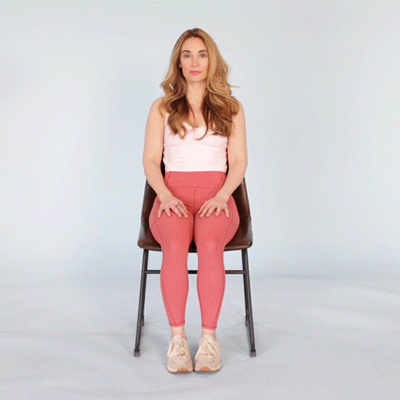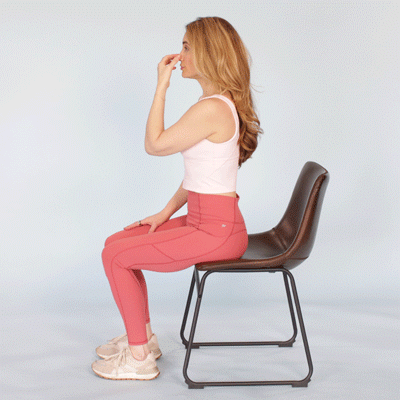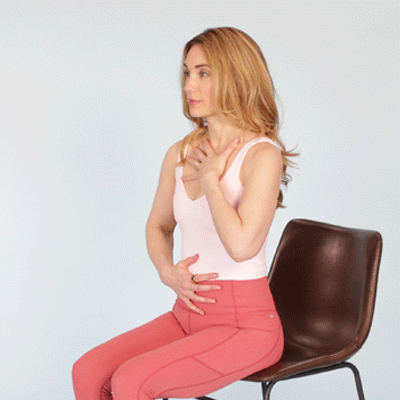If you’re living with asthma, staying active can be challenging. Exercise can be a major trigger for asthma symptoms, which is one reason people with asthma tend to be less physically active than people without the condition, according to a
But exercise has specific benefits for people with asthma, the 2023 review suggests.
In fact, regular physical activity is linked with better asthma management, improved lung function, lower inflammation, and a better quality of life in people with asthma. Not to mention that meeting physical activity recommendations can help you maintain a moderate body weight and prevent other health issues, such as heart disease and type 2 diabetes.
What’s more, breathing exercises can help increase your lung strength and function, which can improve exercise tolerance and performance.
There are plenty of ways to stay active and keep your body healthy when you have asthma. Here are some expert-recommended, asthma-friendly exercises that you can adapt to suit your symptoms and fitness level.
Breathing exercises
Here are a few evidence-based breathing techniques to try:
Buteyko breathing
Buteyko breathing is a practice designed to help your lungs work properly. This technique is meant to increase breathing awareness and stabilize your breathing rate by reducing the number of breaths you take and improving how your body consumes oxygen.
Studies show that this breathing exercise may benefit people with asthma by
To prepare to practice Buteyko breathing:
- Sit upright in a chair with a straight back.
- Relax your shoulders and rest your lower back against the chair.
- Breathe as usual for a few minutes.
The control pause
- After a relaxed exhale, hold your breath.
- Use your index finger and thumb to plug your nose.
- Hold your breath until you feel the urge to breathe, which may include an involuntary movement of your diaphragm, then inhale.
- Breathe as usual for at least 10 seconds.
- Repeat several times.
The maximum pause
- After a relaxed exhale, hold your breath.
- Use your index finger and thumb to plug your nose.
- Hold your breath for as long as possible. Aim for twice the length of time as the control pause.
- When you begin to feel moderate discomfort, inhale.
- Breathe as usual for at least 10 seconds.
- Repeat several times.
The Papworth method
The Papworth method involves a series of diaphragmatic breathing exercises and relaxation techniques. This method
Diaphragmatic breathing is a type of slow, deep breathing that engages the diaphragm, a muscle located beneath the lungs that helps you breathe.
Here’s how the Papworth method works:
- Sit up straight in a comfortable position.
- Relax and breathe as usual for a few minutes.
- Place one hand on your chest and the other hand on your abdomen.
- Take a deep breath in through your mouth or nose, counting to 4.
- Exhale through your nose for a count of 4.
- Continue this practice for a few minutes, focusing on your abdomen rising and falling while keeping your chest and shoulders relaxed.
Staying physically active by regularly engaging in cardiovascular activities can help keep you healthy, prevent chronic diseases, and improve your asthma symptoms.
Generally speaking, as long as you can manage your asthma symptoms, you can engage in any cardiovascular activity you like, including walking and biking, according to the American Lung Association (ALA).
If you’re new to working out, however, you may want to start with some lower intensity activities to help your body get used to exercise and understand how physical activity affects your asthma symptoms.
Here are some beginner-friendly cardio exercises to try:
Treadmill walking
Walking on a treadmill is a great way to improve cardiovascular health if you have asthma. You generally don’t have to worry about air temperature changes, which can be an issue for people with asthma. This is because cold temperatures may trigger asthma symptoms.
Here’s how to safely exercise on a treadmill:
- Start walking at a slow and steady pace, about 2.5 to 3 miles per hour. Monitor your breathing and take slow, consistent breaths.
- Continue at this pace for a few minutes.
- If this pace feels easy, you can increase the speed or incline on the treadmill.
- Keep your workouts to 15–20 minutes to start, and gradually build up your time on the treadmill.
- As your exercise tolerance improves, try incorporating 30- to 60-second intervals of a quicker pace or steeper incline.
- Take breaks if you need and slow your pace or stop walking if you’re experiencing asthma symptoms.
Biking
Biking is a low impact cardiovascular exercise that‘s often recommended for people with asthma.
Biking is an activity that can suit people of all body types and fitness levels, so it can be a good choice for people with asthma who are new to exercise. It can be done outside or indoors, making it a convenient exercise option.
Cycling indoors may be a safer choice for people with asthma when the weather is particularly chilly or when pollen levels are high. Exercising in a controlled environment can help reduce the risk of asthma attacks, the ALA suggests.
If you’re interested in trying cycling, consider starting with a short 10- to 20-minute bike ride, using an indoor stationary bike or a bicycle for outdoor exercise. As your stamina increases, you can try increasing your resistance or cycling time.
Adding strengthening exercises to your routine is important for overall health and may help
You can adapt a number of strength exercises based on your fitness level and asthma symptoms.
Here are some asthma- and beginner-friendly exercises to try:
Squat to overhead press
This exercise works your entire body, including your legs, abs, and arms.
If you’re new to working out, you can complete this exercise without weights, then add in weights as you get stronger over time.
Here’s how to safely do this exercise:
- Stand with your feet shoulder-width apart and your arms relaxed alongside your body.
- Slowly lower your hips into a squat position, keeping your knees over your toes and your back flat.
- Slowly push through your heels to return to standing, then press your arms over your head until they’re fully extended.
- Return to the starting position.
- Do 1–3 sets of 8–12 repetitions, depending on your ability.
- Be sure to focus on your breathing throughout this exercise and take breaks if needed.
Forearm plank
Planks are an effective way to improve core strength and are a great choice for people who are new to working out, as they’re appropriate for all fitness types and don’t require any equipment.
Research shows that incorporating planks into your workout may help
Here’s how to do a plank:
- Lie on your stomach on an exercise mat or other soft surface. Your forearms should be directly under your shoulders.
- Slowly press into your forearms to lift your torso off the floor.
- Tuck your toes and lift your knees off the floor, forming a straight line with your body.
- Engage your abs and keep your back in a straight line.
- Hold this position for as long as you can, dropping your knees to the floor if you get tired.
- Over time, you’ll likely be able to hold a plank for a longer period of time, with a goal of 1 minute or more.
Whether you’re new to working out or are looking for ways to make your current exercise routine more asthma-friendly, these tips can help:
- Use caution when exercising in the cold: Cold air can trigger asthma symptoms. If you’re working out in cold temps, try covering your mouth and nose with a scarf or another breathable material to protect your lungs from the cold air.
- Stay aware of your breathing: If you’re experiencing asthma symptoms while exercising, stop exercising and either sit down or stand up with a slight forward bend in your trunk and your arms supported on a flat surface like a table. These positions can help relieve breathlessness. You can also use your quick-relief inhaler if needed.
- Be prepared: Always have your asthma medications on hand in case you have an asthma attack while exercising. You may need to take your medication 15–20 minutes prior to working out or as prescribed by your doctor to help reduce the risk of experiencing asthma symptoms.
- Start slow: Increase the time and intensity of your exercise gradually over weeks or months to allow your body and lungs to get used to the activity. It’s a good idea to always start with a 5- to 10-minute warmup to prepare your body for exercise and include a cooldown after every workout.
Ask your doctor for advice if you’re nervous about incorporating exercise into your routine. They can help you create a safe, asthma-friendly workout and a symptom management plan based on your overall health and asthma severity.
Exercise is a common asthma trigger, which may lead some people with the condition to avoid physical activity. But regular exercise can actually help improve lung function, manage asthma symptoms, and maintain overall health.
It’s a good idea to get a combination of cardio, strength, and breathing exercises. These can be modified to fit your symptoms and fitness level. If you’re new to working out, talk with your doctor about how to safely exercise with asthma.
It’s important to start slow, keep your asthma medication with you, and try to avoid potential asthma triggers, such as exercising in the cold.





